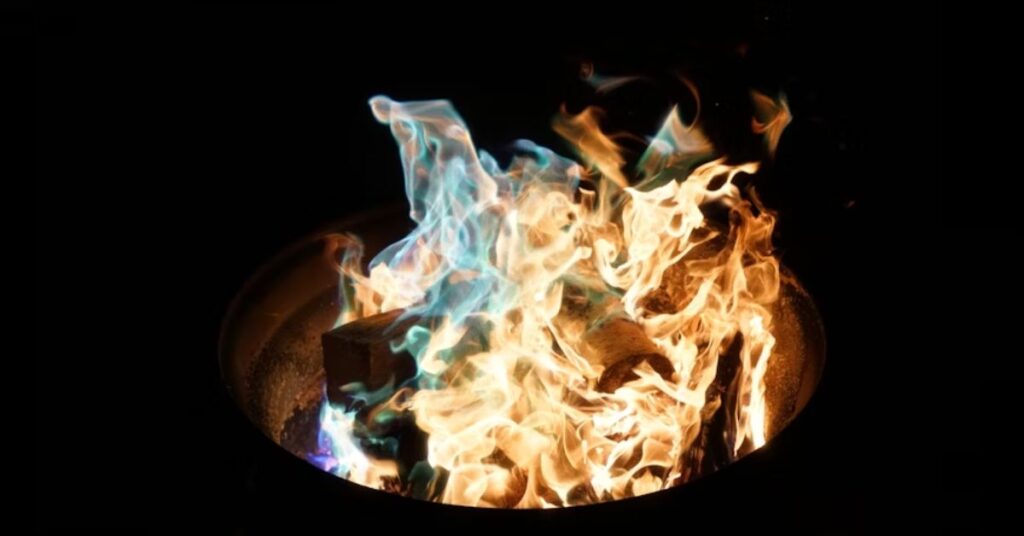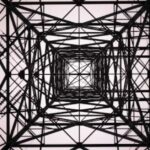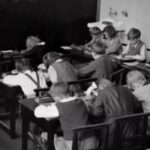For homeowners who rely on gas fireplaces, the pilot light is more than a small flame—it’s the heart of a safe and functional heating system. Whether you’re new to gas fireplaces or troubleshooting an issue, understanding the gas fireplace pilot light is essential. This comprehensive guide explains how it works, its role in safety and efficiency, common problems, and how modern innovations are shaping its future. With clear, expert-backed insights, this article helps you master a component that too often goes unnoticed—until it fails.
The Basics: What Is a Gas Fireplace Pilot Light?
The pilot light is a small, continuously burning flame that ignites the main burner of a gas fireplace when you turn it on. It’s typically located near the base of the fireplace, just above the burner assembly, and stays lit through a small supply of natural gas or propane.
Originally used in gas stoves, ovens, and heaters, the pilot light evolved to become a standard feature in gas fireplaces. Its main function is to act as a reliable ignition source—eliminating the need for matches or electrical igniters. It also plays a safety role, ensuring that gas does not leak into the room without combustion.
There are two main types of pilot lights in gas fireplaces:
- Standing Pilot Light: A flame that burns constantly, even when the fireplace is off.
- Intermittent Pilot Ignition (IPI): A modern system that lights the pilot only when needed, often controlled by a remote or wall switch.
The Science Behind the Flame
The gas fireplace pilot light operates on a simple yet precise mechanism. When the gas valve is opened, fuel flows to the pilot light nozzle. A thermocouple or thermopile detects the flame and keeps the gas flowing. If the flame goes out, the sensor cools and cuts off the gas supply—a key safety feature.
Key Components:
- Thermocouple: A small metal sensor that generates a voltage when heated by the flame. It signals the valve to stay open.
- Thermopile: Like a thermocouple but designed for systems with more electrical demand, such as remote-controlled fireplaces.
- Pilot Orifice: A small nozzle that delivers the gas to the flame.
- Control Valve: Regulates the gas flow and connects to safety sensors.
Understanding how these parts work together helps homeowners identify the source of problems when the pilot light won’t stay lit.
Troubleshooting: Common Pilot Light Issues
While pilot lights are built for reliability, they can malfunction due to dirt, component failure, or gas supply issues. Here are the most frequent problems and how to diagnose them.
| Problem | Possible Cause | Solution |
|---|---|---|
| Pilot light won’t stay lit | Faulty thermocouple or thermopile | Replace sensor, clean components |
| Weak or flickering flame | Blocked pilot orifice or low gas pressure | Clean nozzle, check gas regulator |
| No flame at all | Gas turned off or air in the gas line | Open valve, purge line, relight after waiting |
| Delayed ignition of main burner | Dirty burner or weak flame | Clean burner and ensure strong pilot flame |
| Repeated outages after lighting | Drafts or sensor misalignment | Adjust sensor position, inspect for air movement nearby |
If issues persist despite DIY fixes, calling a licensed gas technician is the safest route.
Seasonal Maintenance for Pilot Lights
Maintenance is often overlooked until problems arise, but consistent care keeps your fireplace running smoothly year-round. Here are the best practices for maintaining your pilot light.
- Clean the pilot assembly at least once per year using compressed air and a soft brush.
- Inspect the flame color—a steady blue flame is ideal; yellow or orange may indicate incomplete combustion.
- Test the thermocouple for continuity with a multimeter, especially before winter.
- Check for soot or residue on the pilot nozzle and surrounding area.
- Schedule annual servicing with a certified HVAC or gas fireplace specialist.
This maintenance not only prevents failure but extends the life of the entire fireplace unit.
Pilot Light Safety: What Every Homeowner Must Know
Safety is a major reason the pilot light exists. It ensures gas only flows when there’s a flame to ignite it. Still, neglect, improper handling, or malfunction can pose serious risks.
Key Safety Tips:
- Never use open flames (like lighters) to test gas leaks—use soapy water and watch for bubbles.
- Keep combustible materials (e.g., curtains, papers) away from the fireplace.
- Install a carbon monoxide detector in the same room as your gas fireplace.
- Do not bypass safety valves or sensors.
- Turn off the gas supply if the pilot light repeatedly goes out, and call a professional.
Most modern fireplaces are equipped with automatic shutoff valves, reducing the chance of gas buildup. Still, user vigilance remains essential.
Energy Efficiency and Pilot Lights
One of the biggest criticisms of traditional standing pilot lights is their energy use. Though small, they burn continuously, consuming gas 24/7.
Annual Gas Consumption:
A standing pilot light typically uses between 600 and 900 BTUs per hour, equating to 5-10 therms per month, depending on the model.
This adds up to about $50 to $100 per year, depending on your local gas rates. While this may not break the bank, it’s wasteful if the fireplace is only used occasionally.
Efficiency Alternatives:
- Intermittent Pilot Ignition (IPI): Activates only when needed—up to 85% more efficient.
- Electronic Ignition: Uses a spark, eliminating the need for a standing flame.
- Pilot Light Timers: Allow you to schedule on/off periods for the pilot flame.
- Thermostatic Remotes: Automatically activate the pilot and burner to maintain room temperature.
These options improve energy efficiency without compromising the reliability of your fireplace.
When to Turn Off the Pilot Light
If your gas fireplace uses a standing pilot light, it may be wise to shut it off during warmer months.
Pros of Turning It Off:
- Saves money on gas.
- Reduces heat load in warmer seasons.
- Decreases carbon footprint.
Cons:
- Requires relighting when you use the fireplace again.
- May allow moisture into the gas line in humid environments.
- Insects or dust can block the nozzle if left inactive for months.
If you decide to turn it off, follow the manufacturer’s instructions carefully to avoid leaks or damage.
Innovations in Pilot Light Technology
Today’s gas fireplace systems are incorporating advanced safety and energy features, redefining how pilot lights function.
Modern Innovations Include:
- Smart Thermopiles: Adjust sensitivity based on ambient temperature, increasing reliability.
- Wi-Fi Enabled Controls: Allow you to monitor and adjust the pilot status from your phone.
- Self-Diagnostic Modules: Flash error codes when a component fails, helping speed up repairs.
- Hybrid Systems: Combine pilot and electronic ignition to balance efficiency and reliability.
These technologies are transforming how homeowners interact with their fireplaces, making operation more intuitive and cost-effective.
Gas Fireplace Types and Pilot Light Variations
Different styles of gas fireplaces use slightly different pilot light configurations. Understanding these variations can help with troubleshooting and upgrades.
| Fireplace Type | Pilot Light System Used | Notes |
|---|---|---|
| Traditional Log Sets | Standing Pilot or IPI | Common in older homes, often manual |
| Direct Vent Fireplaces | Intermittent Pilot Ignition | Sealed system, more energy-efficient |
| Vent-Free Fireplaces | Standing Pilot (usually) | Extra sensors to prevent CO build-up |
| Insert Fireplaces | Either Standing or IPI | Retrofit units may have manual switches |
| Outdoor Fireplaces | Standing Pilot (weatherproof) | Must be shielded against wind and rain |
Always consult your unit’s manual to identify which system is in use.
How to Light a Pilot Light Safely
Relighting a pilot light can seem intimidating, but it’s usually a straightforward process.
Step-by-Step Guide:
- Turn off the gas supply and wait 5-10 minutes.
- Locate the pilot assembly—usually near the bottom of the fireplace.
- Set the control knob to “pilot” and press down.
- While holding the knob, press the igniter or use a long lighter.
- Keep holding the knob for 30-60 seconds after the flame lights.
- Release and ensure the flame stays lit.
- Turn the control knob to “on” and test the main burner.
If the flame goes out immediately or does not light at all, you may have a faulty sensor or gas flow issue.
Environmental Considerations
A gas fireplace is cleaner than a wood-burning unit, but it still contributes to your home’s carbon footprint—especially with a standing pilot light. By switching to more modern systems or reducing idle usage, you can reduce emissions without giving up comfort.
- Consider upgrading to IPI or electronic ignition.
- Use a thermostat to avoid overheating.
- Turn off the pilot light in summer.
- Combine fireplace usage with home insulation improvements to reduce total energy demand.
Final Thoughts: What the Pilot Light Reveals About Your Fireplace
The pilot light might be a small flame, but it signals much about your gas fireplace’s health, safety, and efficiency. Understanding its role and recognizing signs of trouble empower homeowners to maintain safer, cleaner, and more energy-efficient homes.
Whether you’re trying to fix a faulty flame or planning a system upgrade, the pilot light is where your attention should start. It’s not just about the flame—it’s about everything that flame makes possible: comfort, safety, and peace of mind.
If your fireplace is older or showing signs of inefficiency, investing in a more modern ignition system can save both money and energy in the long run. And for those comfortable with DIY maintenance, taking the time to clean and test components annually can extend the life of your fireplace for years to come.
In the world of home heating, the pilot light is still quietly doing its job—unless it’s not. Knowing when and how to act makes all the difference.







